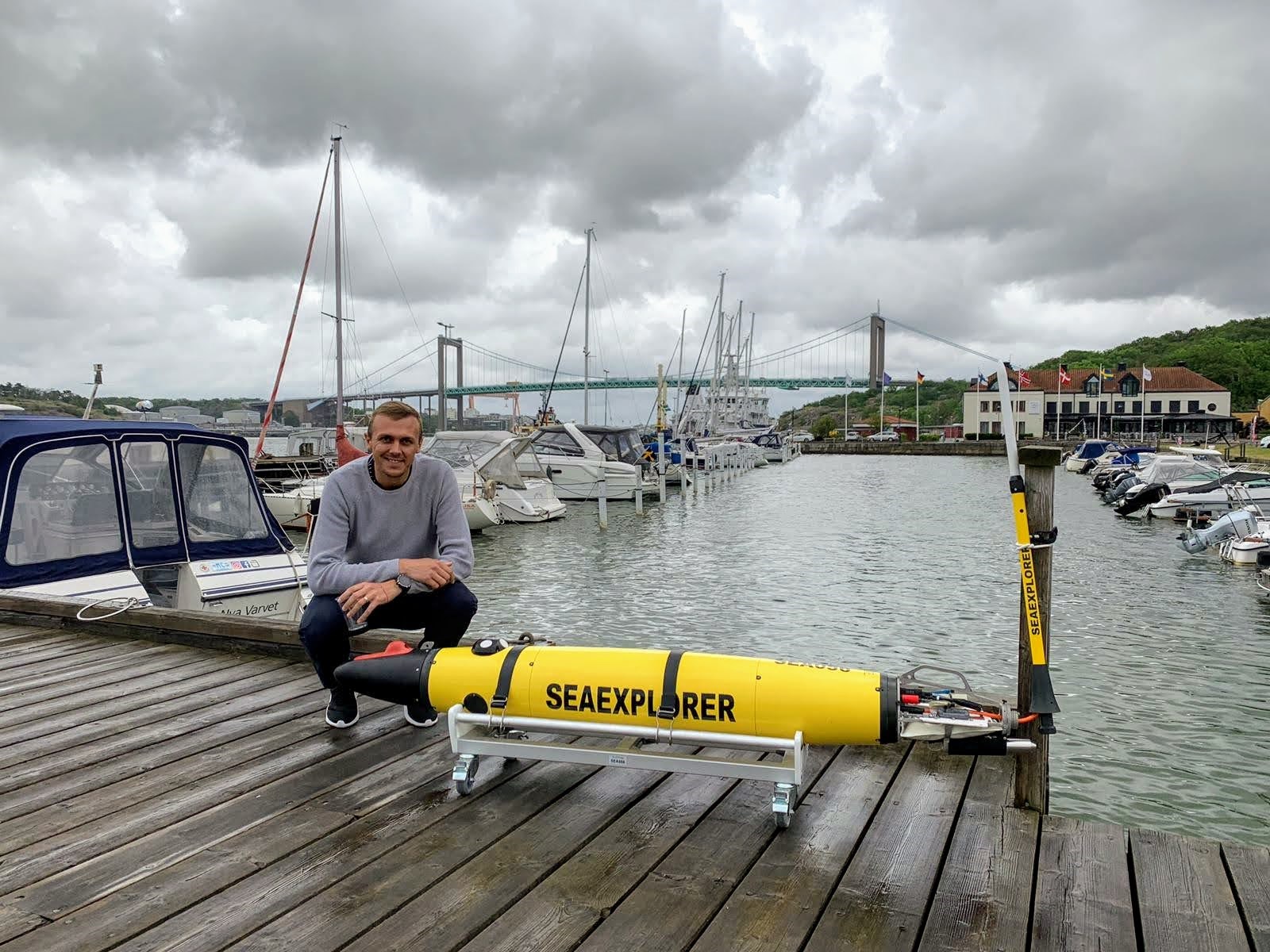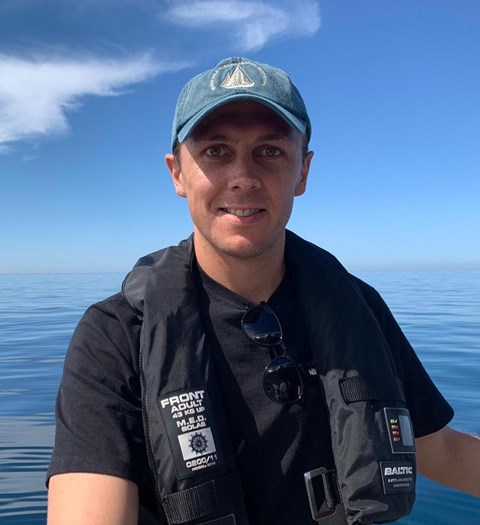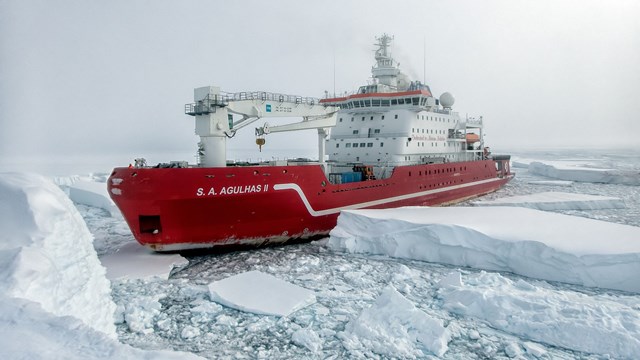"Our observations can improve global climate models"
 Marcel du Plessis, University of Gothenburg, and a water column profiling autonomous underwater glider. Photo: private.
Marcel du Plessis, University of Gothenburg, and a water column profiling autonomous underwater glider. Photo: private.
Marcel du Plessis works as a postdoc in Physical Oceanography at the University of Gothenburg. In December, he and three colleagues will travel with the South African icebreaker S.A. Agulhas II to the Weddell Sea which is part of the Antarctic Ocean.
The researchers will use autonomous vehicles to measure the air-sea flux of heat and carbon on the field campaign within the Horizon 2020 project Southern Ocean Carbon and Heat Impact on Climate (SO-CHIC). The purpose is to investigate how this flux, which is so important for the climate, is transported from the atmosphere to the sea, where the carbon can be stored for centuries.
Hi Marcel! You will soon go on an expedition to the Weddell Sea. Can you tell us more about the expedition?
– Along with others from the SO-CHIC project, I will fly from Oslo to Antarctica to join the research vessel SA Agulhas II on its annual Antarctic voyage. Once we arrive at the ship, we travel from the Antarctic ice shelf to two unique sites in the Weddell Sea, where we will spend 15 days deploying an array of instruments that will remain in the water collecting data for the upcoming year.
What is your field of research?
– I am a physical oceanographer who studies the mechanisms that drive the exchange of heat and carbon between the atmosphere and the deep ocean. To do this, we use several autonomous robotic vehicles that measure physical and biogeochemical properties from the atmospheric boundary layer down to 1 km below the sea surface. This allows us to understand the air-sea flux of heat and carbon. Ultimately, how these climatically important properties are transported from the atmosphere to the deep ocean, where they can be stored for centuries.
What type of measurements will you do on the expedition?
– As a part of the field campaign, researchers at the University of Gothenburg will be deploying a water column profiling autonomous vehicle called a Seaglider and a surface autonomous vehicle called a Sailbuoy. These instruments will remain in the frigid Antarctic waters for a full annual cycle and will be retrieved at the end of 2022. We will pilot the instruments back in Gothenburg, where they will send their data back in real-time, providing us with an annual cycle of atmospheric and oceanic variables across the entire air-sea interface.
What do you hope to find?
– The Southern Ocean is a fascinating place. Annual sea ice growth and melt covering a surface area equivalent to that of South America underlie the passage of intense cyclonic storms that regularly exceed hurricane strength. In this study, we will investigate the interplay between seasonal atmospheric warming and cooling, eddies created by sea ice melt and mixing by storms on the direction and magnitude of the air-sea flux of heat and carbon from the surface to deep ocean. This will help us determine what processes are most important for regulating atmospheric heat and carbon dioxide.
Why is this research important?
– The future projection of climate is made using global climate models, as seen in the recent IPCC report. However, these models have significant uncertainties in regions where observations are sparse, particularly in the Southern Ocean. Our observations will not only help test and validate these models, but also show how the models can be improved by revealing the important processes at play (magnitude and variability of air-sea heat and carbon flux) and the time and space scales at which these processes occur (storms, eddies, sea ice variability, seasonal warming/cooling).
What do you look forward to the most with the expedition, and how do you prepare?
– There are many aspects of this expedition that I’m looking forward to! The opportunity to fly to the Antarctic continent and get to the research vessel via small aircraft, lead the University of Gothenburg research team on an expedition into the Southern Ocean working with state-of-the-art research instruments, visiting the Antarctic bases, and contributing to a larger project with a common goal.
– The preparation for this voyage has quite a few moving parts, from the logistics of preparing the gliders for a year at sea, ensuring we have the required medical tests, safety training and warm weather gear – to the mental challenge of spending two weeks alone quarantining in a hotel and then come to Antarctica less than 24 hours later. This is a unique opportunity, and I can’t wait to get going.

Our support
Clothes for fieldwork

